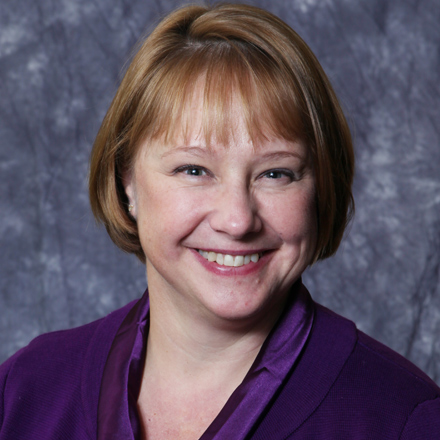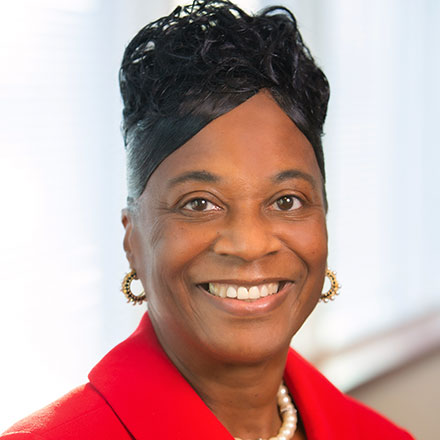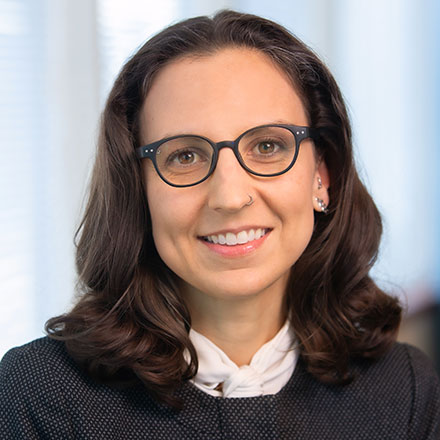Q&A
Women Leaders in Family Medicine to Peers: ‘Be Unstoppable’
Jan. 12, 2023, 3:50 p.m. News Staff — When Tochi Iroku-Malize, M.D., M.P.H, M.B.A., officially became AAFP president during the 2022 Congress of Delegates, it marked the second time in three years that a Black woman had attained that position.

It’s a significant shift for an organization that had 57 male presidents before electing its first female president-elect in 2003. When a new Board of Directors was seated during the 2022 COD, more than three-quarters of the director positions and a majority of all elected positions were filled by women.
Nearly half of AAFP active members are women, up from one-third in 2005. The trend is likely to continue upward:. Women account for 56% of resident membership and 58% of student membership, respectively.
Two past presidents and a current member of the Board sat down with AAFP News to discuss barriers women have overcome in family medicine, as well as challenges and opportunities that lie ahead.
AAFP News: What is a specific challenge you’ve had to overcome as a woman and a family physician leader in health care?
Wanda Filer, M.D., M.B.A., of Orlando, Fla., AAFP past president; chief medical officer of VaxCare; and director for Telligen: The challenge for women is we have a lot of different responsibilities, particularly if you have a family. How do you find time to balance your roles with work and professional commitments, let alone taking on leadership?
When I was first assigned to a state commission, I had young children, and I remember someone asking my husband — who also is a physician — “Are you OK with this?” Fortunately, my husband was very supportive, and that’s critical: to have your family aligned with your goals and what you are trying to accomplish.
Women can experience guilt, which is destructive and undermines our power. That is prevalent with women, and we need to let that go because it can be paralyzing. I was fortunate to have a high-achieving mom as a role model.
Ada Stewart, M.D., AAFP past president; lead physician at Waverly Family Practice and HIV specialist at Cooperative Health in Columbia, S.C.; member of the Presidential Advisory Council on HIV/AIDS; and colonel, U.S. Army Reserves: One of the largest challenges I’ve seen is just being heard as women. Many times, when women speak they are often ignored or not taken seriously. It is challenging to know when to speak up and be recognized or even have the courage to take the lead. I have seen many women present an idea and not be acknowledged, but when their male counterpart presents the same or similar (idea), it is welcomed and recognized as a great idea. It’s a greater challenge as a Black woman, often being seen as an “angry Black woman” when speaking up.
Sarah Nosal, M.D., of Bronx, N.Y., AAFP Board of Directors; vice president for innovation and optimization and chief medical information officer at The Institute for Family Health: When I was starting my career in family medicine and simultaneously starting leadership roles in my state chapter and in my organization, I had this very naive belief that if I could just find someone who was doing exactly what I wanted to be doing, exactly how I wanted to be doing it, they would be able to show me the way.

As a young woman, walking into our chapter boardroom with only two other female faces staring back at me from tables full of men, I had to overcome my own fixed ideas about how I would find my path and who I would look to both to learn from and to lift me up. As I overcame my own preconceived notions, each of these family physicians and leaders pushed me, inspired me and taught me pieces of the puzzle that I would put together to build my own career.
AAFP News: Tell me about a woman mentor or role model who helped you. How do you try to pay that forward? Dr. Filer, you mentioned your mother. Let’s start with her.
Filer: My mom was a nurse and an executive. I went to work with her before they had Take Your Daughter to Work Day. I remember watching her run board meetings and put budgets together. To this day, she is my sounding board. She’s 84 years old, and she’s very sharp. Sometimes I have conversations with her about the successes and challenges I encounter. That allows her to stay connected and supportive in my life. She’s my mom, but we can talk on a more professional level.
I also like talking to other women in high-achieving roles. It becomes a peer group. We learn from one another. And I like to talk to women leaders who aren’t in health care. I can learn best practices and what’s evolving in their world that I can borrow and use in health care. It helps me understand the landscape of leadership in a much more robust way.
I have men and women call me for advice on a regular basis. They all come from different perspectives and places in family medicine. I’m honored they are reaching out to me. They want to figure out what’s next for them and how they can get there.
When my daughters were young, they told me once, “You’re like Barbie,” and initially I took offense to that because Barbie meant something different to me than it did to them. But what they meant was Barbie can do all sorts of jobs. In addition to being a physician, I was on the board of a bank, and I was working in television at the time. I prefer to think of family physicians as pluripotent stem cells. We’re trained with a broad array of skills and knowledge, and we can play many different roles.
Nosal: I was particularly blessed early on to get to work with our now-President Dr. Tochi Iroku-Malize. There were two women on our state chapter board when I came in as a director in my first year after graduating from residency. Tochi is one of those people who looks around a room and asks, “Who do we need to develop? Who’s next?” Some people only look for people who look like them. Tochi finds potential in everyone. Right away she lets you in on the unspoken etiquette of leading in a community of physicians. She has a vision for where we are going, and she pulls you in so you are a part of that vision: Where do we need our state to go, and how do we make it growing, changing, welcoming and moving forward?
We built something together, and in the process, we developed our own skills because her vision and the work included all of us. That’s the kind of leader we all wanted to emulate. We all said we wanted to be Tochi when we grow up because we could not imagine anyone else taking us there. Watching her and learning through observation, you knew she was a mom, partner, leader in an organization and leader in a community from the work she was doing. She wasn’t afraid to be all of those things wherever she was. She brought all of herself to every leadership role. When you bring all of that, it brings authenticity and understanding. I remember her whole family being at chapter meetings. It made being a mom a safe thing to be, not different.

Stewart: The role models and individuals I chose to emulate — many of them look like me. I have gravitated toward women like (former U.S. Surgeon General) Dr. Regina Benjamin and Dr. Audrey Boyd, who is a family doc in South Carolina, and many, many more. I saw Dr. Jeanette South-Paul just the other day, and I think about the impact that she had on me as a military doctor.
I always go back to the fact that “you can’t be what you don’t see.” Dr. Joycelyn Elders said that, and it’s so true. Many times, you don’t know what you can achieve unless you see, as Wanda said about her mom, someone you can emulate. As I move forward in my journey and my career, hopefully I will be able to be that person that others can emulate and look at me and say, “Yes, I can be the next president of the AAFP.” I’m so proud to see Dr. Tochi Iroku-Malize following me as president. It’s funny because she tells me how proud she is of me. And at the same time, I’m thinking, “I am so proud of you.” Being able to have those individuals who you can look at and say, “Yes, I want to be like her,” is really important, especially as we look to grow the next generation of women leaders.
“Women need to be in places where decisions are made, and that should no longer be the exception but the rule.” Those words from the late Supreme Court Justice Ruth Bader Ginsburg are so true.
AAFP News: What opportunities does the AAFP have to help women develop as leaders in family medicine?
Nosal: The National Conference of Constituency Leaders is a leadership stomping ground. It’s a safe space to practice skills that are critical to the development of policy that moves the Academy forward.
We have a fair, thoughtful way of developing policy through the AAFP Congress of Delegates. New York State (AFP) has a traditional Congress of Delegates, but not every chapter does. Learning the formalities is particularly important. People from many states have to learn how to develop a resolution, how to identify yourself properly in a reference committee, and what the rules and procedures are, and the place they are going to learn that is NCCL. New leaders get recognized by their state chapters at NCCL. They bring back the skills they learned at NCCL to their state and rise up through the ranks of their chapters and, if they’re employed, their companies.
At NCCL, we bring together women, minorities, new physicians, international medical graduates and LGBTQ physicians. That process of hearing their passions and interests helps develop a deeper understanding of different experiences and perspectives. Then you can take that listening ear back to the boardroom, be it in your chapter or office — it has an impact.
My first NCCL helped me to hear and listen to different perspectives. That translated to negotiating my own promotion and developing my own role in my organization. It was really rooted in being able to hear different perspectives thoughtfully and respectively.
Stewart: NCCL really was brought about because of the need for safe space for groups who were not otherwise represented, thereby creating opportunities for minorities, new physicians and women to have their voices heard and to have leadership opportunities. Many individuals from these groups felt they didn’t have a role in our Academy. Many would look at our Board of Directors and leaders and think, “No one there looks like me. No one understands my point of view.” NCCL gave us that opportunity. Other groups were added later as the Academy recognized the need for all to have a voice. It provided more individuals leadership skills, opportunity for growth and networking.
When we look back now, many of our past and current leaders have come through NCCL, and the list is growing. I’ve heard people say over the years that we don’t need NCCL anymore. More than 50% of medical students are women now. There’s parity, so we’re good, right? Well, no, we’re not. We still have issues that need to be addressed, e.g., pay parity for women and more. NCCL gives us this platform and space to address these issues and much more.
Filer: I didn’t come through the NCCL pathway, and I wasn’t aware of it until I was elected to the Board. I went to the event because the Board attends, and the talent and passion in the room knocked my socks off. I saw the representation from so many of my colleagues who took the opportunity to learn and also to teach. I have seen many incredibly capable leaders emerge from NCCL, which speaks to the power of the event.
AAFP News: What unique challenges still exist for women in family medicine, and what are the opportunities ahead that you are excited about?

Nosal: Although there are a lot of challenges still ahead, I have to acknowledge the great privilege I come with as a white woman. For Black and brown women family physicians, the challenges are intersectional and exponentially impactful.
During the 2022 Congress of Delegates address of the EVP, I was really excited to hear Shawn Martin highlight gender pay equity as an AAFP priority and recognize this as an issue ripe for real intersectional consideration and advocacy.
We were all struck by data from the pandemic that really showed us that physicians and other professionals who identify as women faced additional burdens and demands beyond that of their male counterparts. Women were more likely to leave the workforce or decrease hours to take on additional family responsibilities — from child care to care of older parents and family members — when left without our normal support structures in the midst of the pandemic. We continue to face a real exodus of clinicians from the workforce.
With these challenges come opportunities to really restructure, adapt and create the jobs that meet a not previously conceived future. Flexibility of jobs, shared leadership roles, remote or in-person work may not have even previously been considered but are now demanded by our next generation of family physicians entering the workforce. We can make it happen.
Filer: One of the challenges in going to the next level of leadership, for people I’ve talked to recently, is guilt about leaving patients. I try to help them realize that at that next level they are still family physicians, and in that next role they may have an opportunity to have an impact across a broader landscape and a broader number of patients. One of the women I talked to recently is extremely gifted but doesn’t think she’s qualified. She doesn’t feel empowered.
We get so busy in our day-to-day work, it’s easy to forget we once were in those shoes. We need to create paths for others. I don’t care what gender they are, when people stumble, we need to pick them up and help them learn from their mistakes. It’s a matter of opening doors and lifting each other up.
The hunger to do more is a good thing. It shouldn’t make you feel guilty. There are opportunities for family physicians to lead, and this country needs more family physicians in leadership in health systems, academia and government.
Stewart: Another challenge women have is that of “imposter syndrome.” We don’t feel good enough, have self-doubt. As an experienced leader, I still suffer from imposter syndrome at times.
We should no longer be the “first.” We should be one of many. One of the ways we do that is to encourage others, give them courage, tell them how powerful they are. Address implicit biases that exist for women. We are looked at as mothers and wives but not necessarily as leaders. I’m excited that diversity, equity and inclusion is something the Academy is setting as priority.
AAFP News: Do you have any advice for women who are students, residents and new physicians about their family medicine careers or leadership?
Filer: In family medicine, in particular, we are lifelong learners — and not just on the clinical side of things. Picture yourself where you want to be 10 years from now and ask yourself, “What are the skills I need to get there?” Learn them now.
When there is an opportunity, put your hand up. Don’t wait. You’re the only one who enjoys your career, and you are the manager of your career. Get yourself ready and be confident. Be unstoppable. We need you to lead for family medicine, other women and patients.
Stewart: We need to open those doors. Be the individuals who are there and have the courage to turn that doorknob, go in and say, “This is what I want to do.”
We have great leaders in family medicine. Students and residents should seek out those individuals.
There are so many students and residents who have approached me and asked, “How can I get involved? How can I be a leader?” I say, “This is what you need to do. Please give me a call if you have any questions.” Oftentimes, I do not receive those calls. When I do, I say, “What took you so long?” Many respond, “I was afraid to call you; I thought that you were so busy.” So, I would encourage our future leaders to seize every opportunity to have a mentor. I and other women leaders always have time to encourage, empower and inspire others.
You have to have the courage to ask, “Can I do this?” If you do get a “No,” say, “OK, what do I have to do to get a ‘Yes?’ What’s my next step?” If you fail, that’s part of learning. You have to try.
Nosal: The most common thing I hear from women students, residents and new physicians is that they are not sure about taking leadership roles, or they think, “I need to do this first.” They think they are not good enough. Data confirms this. Men will apply for a job when they only meet 60% of the qualifications, but women will only apply if they meet 100% of them.
Often women will be doing a really good job, working really hard and think they will be recognized as someone who should be promoted and brought into a role. But when you do not look like those in charge, you may not be on their radar.
I have watched my supervisors’ eyes light up with interest and excitement when I made clear to them my goals, where I want to be next and what opportunity I wanted to pursue. These conversations have opened those doors simply by putting me on their radar.
People still look around for people who look like themselves, so I challenge all of our women family physicians, residents and students to make sure that the people around you who can make those opportunities happen know where you want to go and that you are there. You are ready.